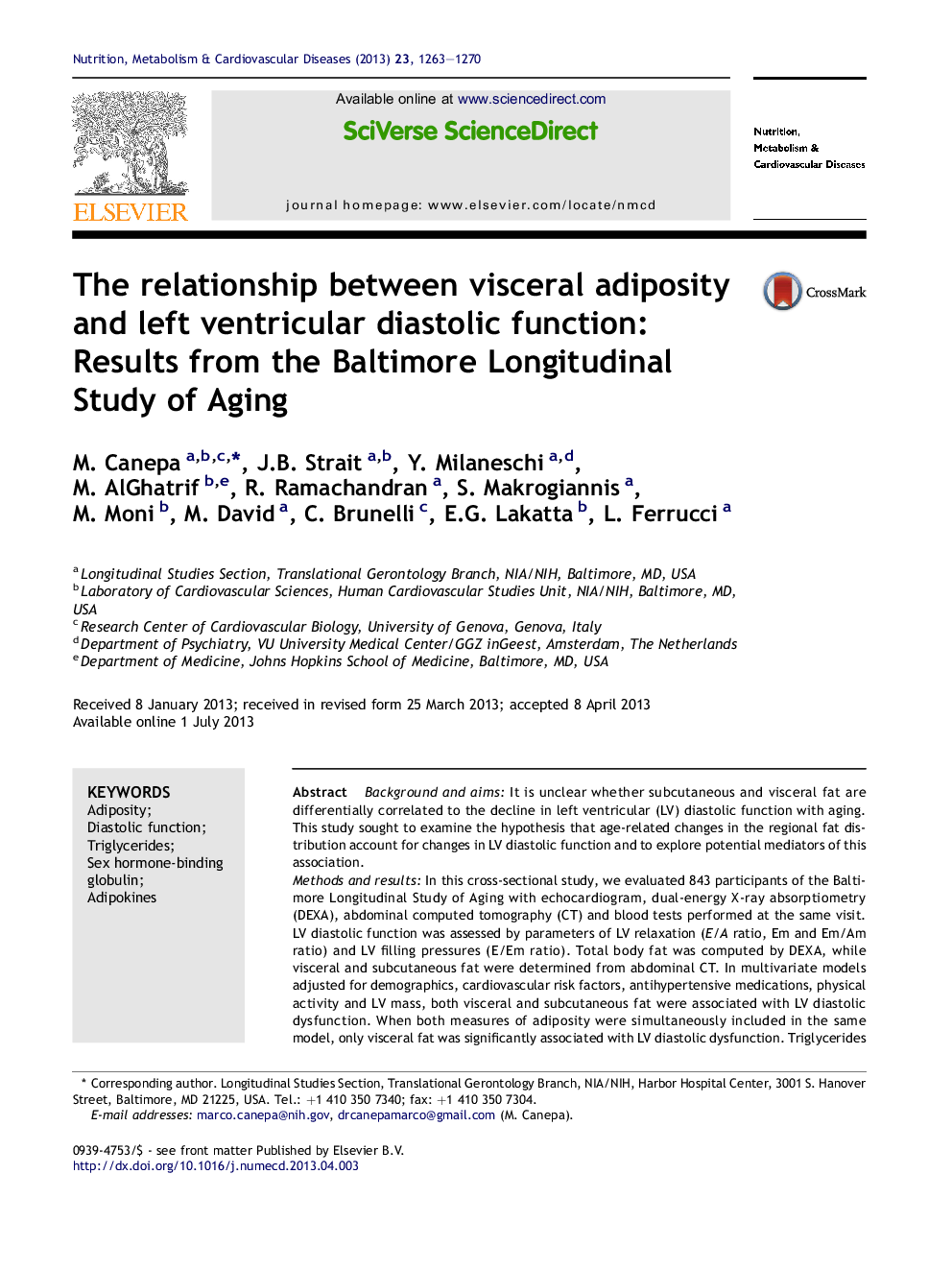| Article ID | Journal | Published Year | Pages | File Type |
|---|---|---|---|---|
| 3002194 | Nutrition, Metabolism and Cardiovascular Diseases | 2013 | 8 Pages |
Background and aimsIt is unclear whether subcutaneous and visceral fat are differentially correlated to the decline in left ventricular (LV) diastolic function with aging. This study sought to examine the hypothesis that age-related changes in the regional fat distribution account for changes in LV diastolic function and to explore potential mediators of this association.Methods and resultsIn this cross-sectional study, we evaluated 843 participants of the Baltimore Longitudinal Study of Aging with echocardiogram, dual-energy X-ray absorptiometry (DEXA), abdominal computed tomography (CT) and blood tests performed at the same visit. LV diastolic function was assessed by parameters of LV relaxation (E/A ratio, Em and Em/Am ratio) and LV filling pressures (E/Em ratio). Total body fat was computed by DEXA, while visceral and subcutaneous fat were determined from abdominal CT. In multivariate models adjusted for demographics, cardiovascular risk factors, antihypertensive medications, physical activity and LV mass, both visceral and subcutaneous fat were associated with LV diastolic dysfunction. When both measures of adiposity were simultaneously included in the same model, only visceral fat was significantly associated with LV diastolic dysfunction. Triglycerides and sex-hormone binding globulin, but not adiponectin and leptin, were found to be significant mediators of the relationship between visceral fat and LV diastolic function, explaining 28–47% of the association. Bootstrapping analyses confirmed the significance of these findings.ConclusionsIncreased visceral adiposity is associated with LV diastolic dysfunction, possibly through a metabolic pathway involving blood lipids and ectopic fat accumulation rather than adipokines.
